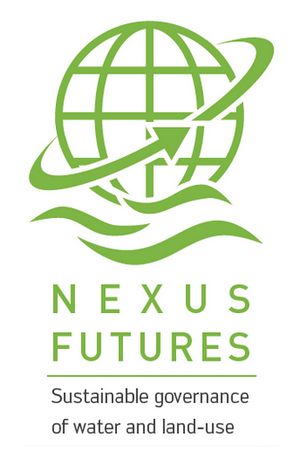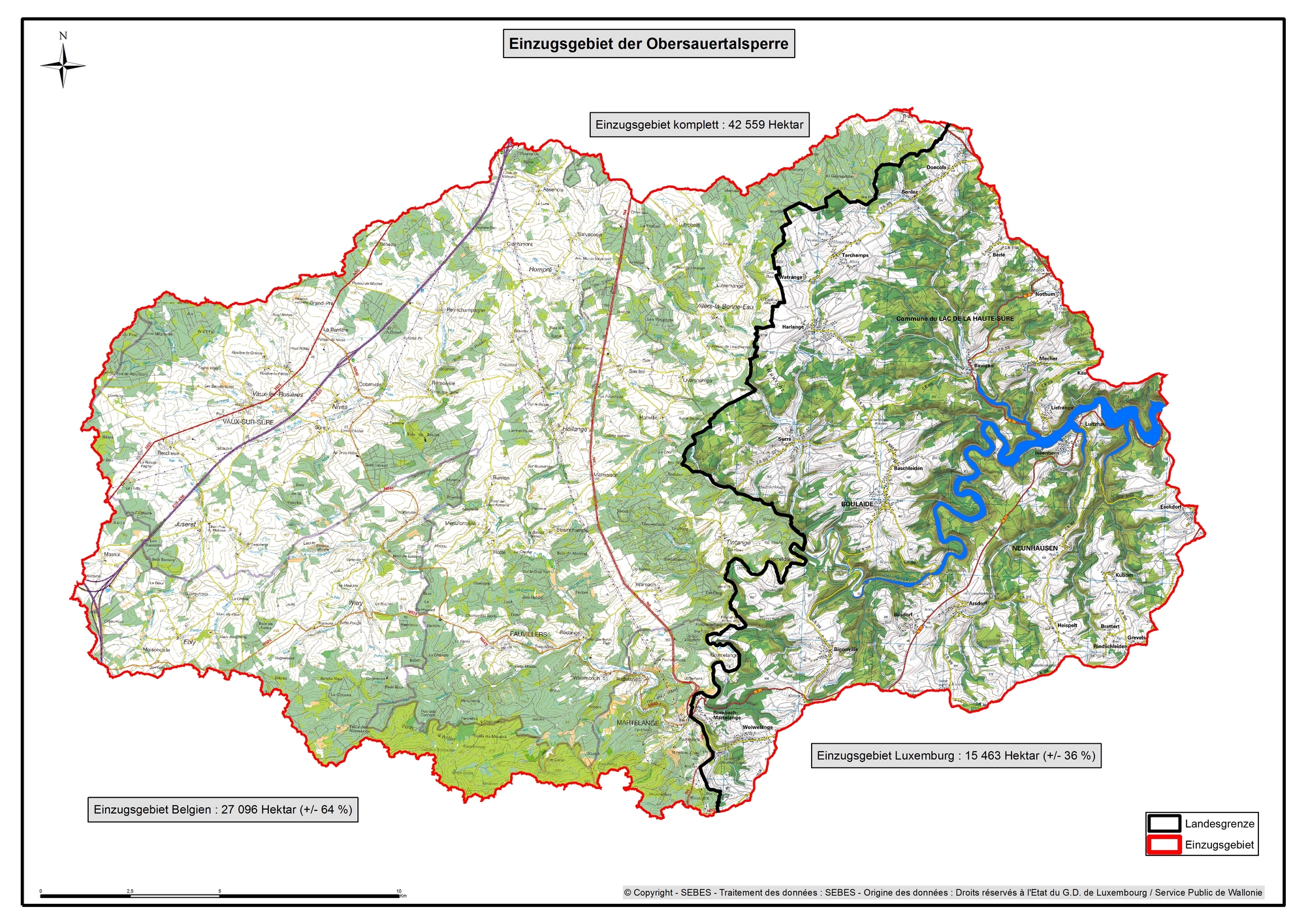Upper Sûre
In the Upper Sûre river basin, we conduct interviews and workshops to examine local challenges and opportunities for action through a systems thinking lens. We work in close cooperation with the river partnership “river contract Upper Sûre” (part of Öewersauer Nature Park) and other actors from the region. The agricultural cooperation LAKU and the drinking water supplier SEBES, who represent two key stakeholders in this region, are also part of the NEXUS FUTURES reference group.
The area: The area of the Upper Sûre Nature Park is the main drinking water supply for Luxembourg. Nationwide, almost 70% of households receive at least part of their drinking water from the 3.8 km2 Upper Sûre reservoir. It is nestled amid the hilly and forested landscape of the Ardennes, which is also a productive agricultural area and a popular tourism destination in Luxembourg. The nature park functions as a coordinating body and also manages the “vum Séi” brand marketing regionally produced food, cosmetics and textiles. The 15,400-hectare nature park area incorporates five municipalities with 13,700 inhabitants in the communities of Boulaide, Esch-Sauer, the Upper Sûre lake community, Winseler and Wiltz.In addition to these, the municipalities of Goesdorf, Wahl and Rambrouch are members of the Upper Sûre river contract. Almost two-thirds of the upstream reservoir catchment area is located in bordering Belgium.
Ecosystems: The entire Upper Sûre river basin received Ramsar status in 2004 as one of the world’s first wetlands due to its high diversity of plant and animal species including some internationally threatened species. Natura 2000 areas were also established in 2017 to protect natural habitats as well as endangered plant and animal species. Natura 2000 is a European network of habitat and bird protection that covers large parts of the Upper Sûre river basin.
Drinking water protection: The Ministry of Environment, Climate and Sustainable Development (MECDD) and the National Water Authority (AGE) presented a revised draft law for new drinking water protection zones in early July 2018, following a public consultation. The aim of the water protection zones is to improve the water quality of the reservoir, which has high seasonal levels of nitrates and phosphates. Furthermore, depending on the season and the weather conditions, the reservoir is frequently affected by blue-green algae bloom during the summer months. This situation increases drinking water treatment costs and leads to the prohibition of any kind of water sports and recreational activities at the reservoir. Many of the diverse stakeholder in the nature park, including the river contract, farmers, water suppliers and the agricultural cooperation Upper Sûre (LAKU) have worked for many years to improve this situation. The implications of the new drinking water protection zones for the stakeholders include new restrictions as well as new funding opportunities for farmers, municipalities and tourism.
NEXUS case study: A case study about the Upper Sûre region, water protection and implementation of new drinking water protection zones was published in the framework of a doctoral thesis in 2021 (see part III of case studies). It investigates diverse factors that have facilitated and investigated cooperation and learning processes between actors engaged in water management, agriculture, environmental protection and regional development. It is based on interviews and a stakeholder workshop.
Creating closer relationships between agricultural producers and consumers and a larger demand for environmentally-friendlier regional products, emerged as one of the central action fields for the future. In addition, the dissertation proposes a number of recommendations on how policy-makers, administrators and practitioners can strengthen social learning and actionable knowledge for sustainability (see also summary in German).
Contact: Kristina Hondrila, University of Luxembourg


